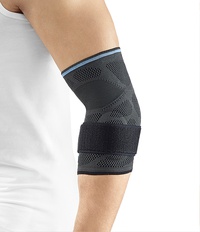Luxation
What does Luxation mean?
Luxation is another term for the dislocation of joints. The joints connecting two immobile bones allow us to move. They consist of two joint surfaces lying on top of each other. In cases of Luxation, these can no longer touch each other. Complete dislocation leads to experiencing sharp pain and the inability to use the affected extremity.
What causes Luxation?
Luxations can occur in any joint of the human body. Dislocations of the shoulder are particularly common, as are dislocations of the hip joint and finger or knee dislocations.
A Luxation can be caused by severe strain, sudden falls or impacts as well as congenital muscle and connective tissue weakness. It can cause heavy bruising and swellings. The surrounding muscles, tendons, and ligaments can often also be injured as a result of a dislocation. If the Luxation occurred as a result of a fall, X-rays are necessary to determine whether the bone has been damaged. In rare cases, a nerve may become trapped or hurt, resulting in paralysis or sensitivity problems.

There is a greater risk of Luxation being experienced by those who play contact sports. For example, in handball, the shoulder must absorb strong force in a collision with the throwing arm extended backwards. Ball sports also involve the risk of dislocating fingers if the ball is caught incorrectly.
The same applies to falls from bicycles or from a horse, which often result in falling onto the shoulder. The joint cannot always cope with such a forceful impact.
How is Luxation treated?
The common idea that a violent tug can remedy the problem is incorrect. Treatment should be handled by a doctor to avoid any further damage to the many delicate blood vessels, bones, and muscles surrounding the joint. The aim is to gently lift the joint back into position so that surrounding vessels and nerve tracts are not damaged. The procedure is performed under local anaesthetic or narcosis.
After the shoulder has been repositioned, Luxations are treated by using shoulder fixation bandages. In this case, the forearm is fixed in a 90-degree position close to the body. It absorbs the weight of the arm and thus relieves the shoulder. Physiotherapy is then used to carefully attempt to gradually restore mobility.
What can you do if you have suffered a Luxation?
Since the joints are supported by muscles, ligaments and tendons , it is advisable to strengthen these. A balanced workout consisting of muscle build-up and co-ordination exercises can lead to more mobility and stability in the affected joint. Exercises with an elastic latex band are ideal as they protect the joint and can be adapted to the performance level of the patient. Exercises using an elastic band are also ideal as a precautionary measure as they reduce the risk of suffering another dislocation in the future.





